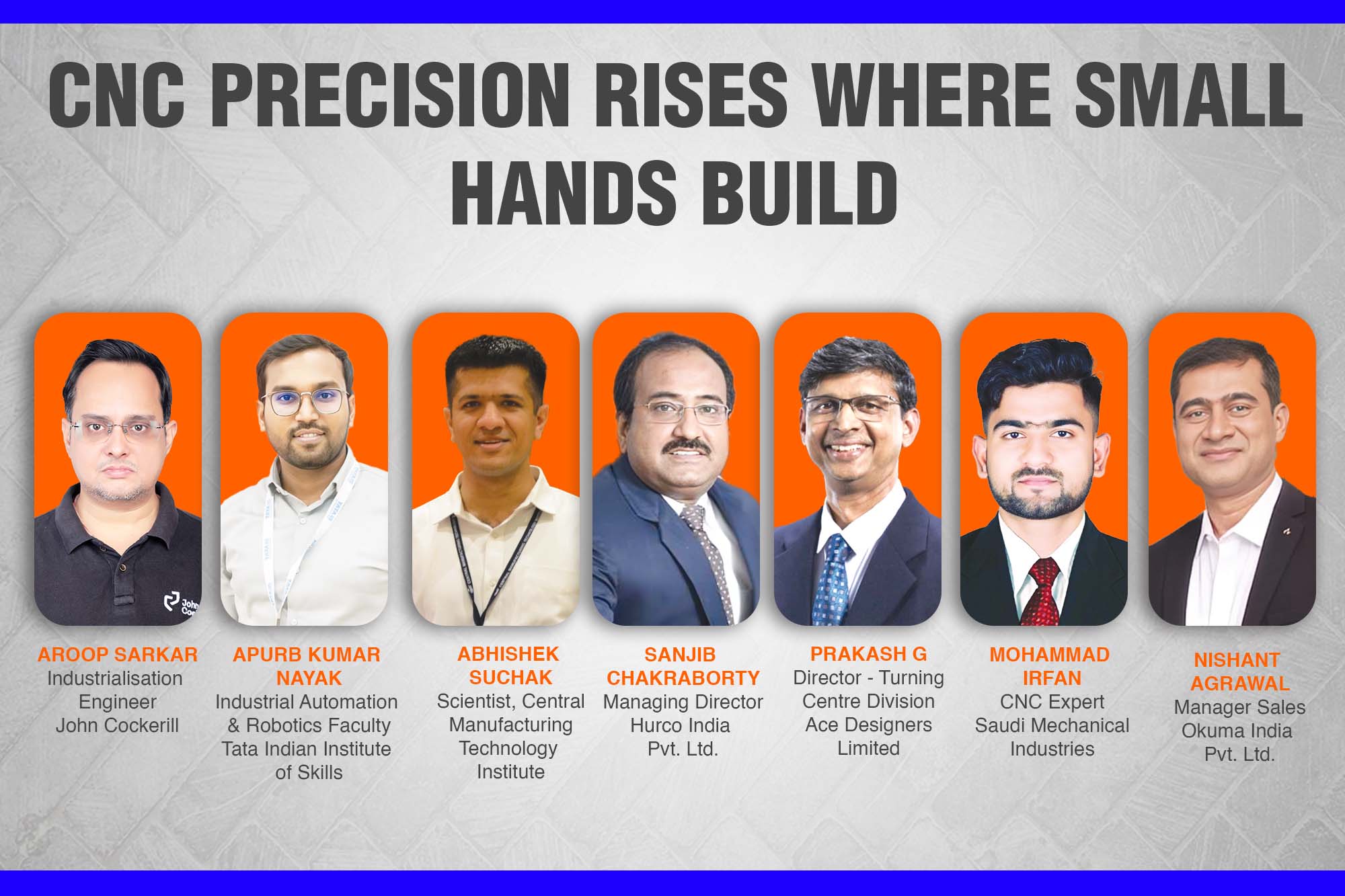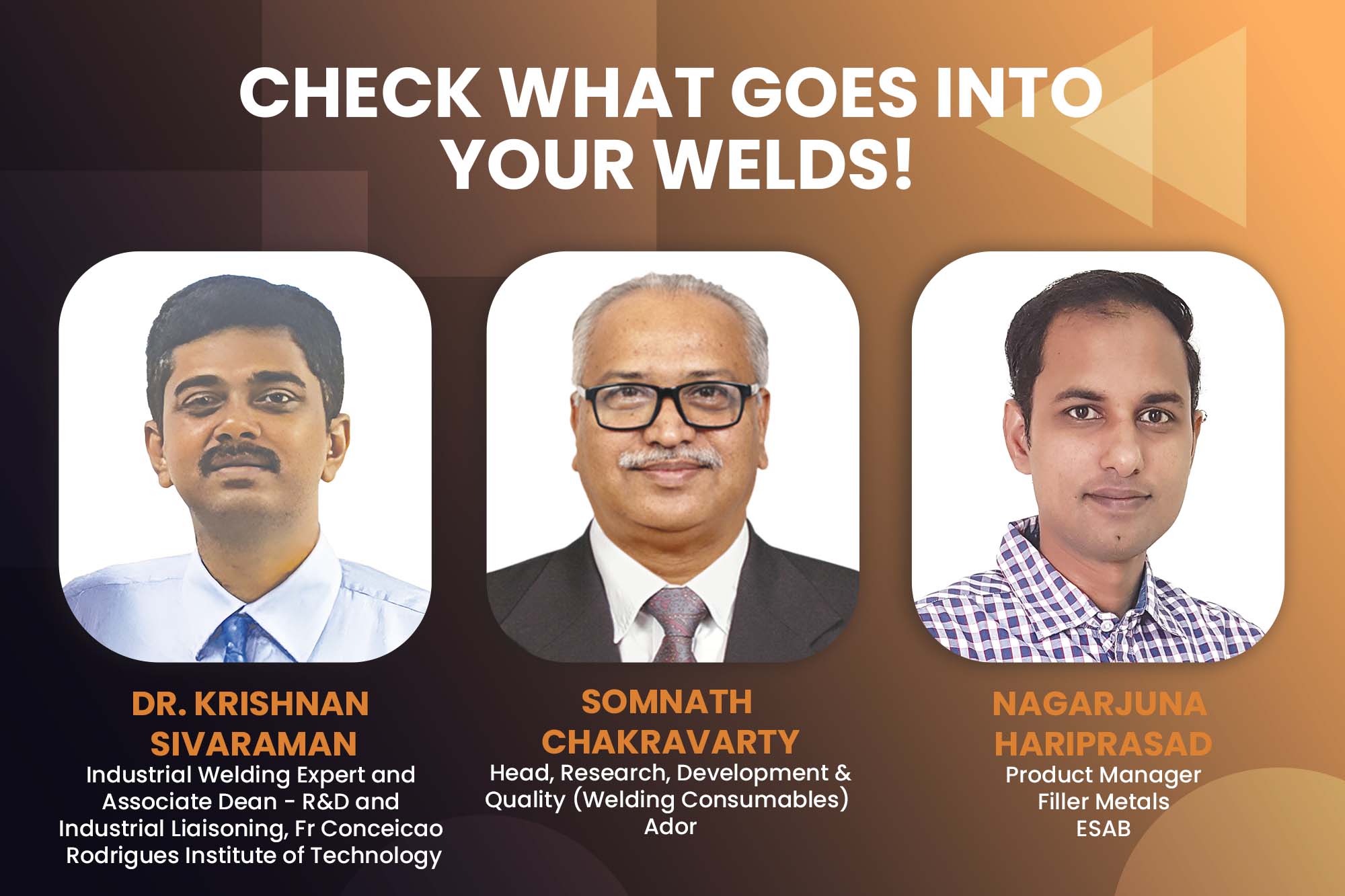Thriving F&B sector amidst demanding automation world
By OEM Update Editorial September 16, 2019 1:58 pm IST
Automation is over riding almost every single industrial sector that is accountable towards the economic growth. Here, we have industry leaders discussing on how automation has been carving the trends and have brought a notable transformation in the Food and beverage Industry in India.
Most manufacturing industries in India are taking a conservative approach when it comes to adopting new technologies and innovations. It is witnessed that there is a keen interest amongst industries to understand available technologies and trends however, the step of identifying gaps in existing processes is missing. This is making the adopting of automation, digitalisation and IoT challenging.
F&B industry automation adoption: Leading or lagging?
Ninad Deshpande, Business Head, B&R Automation says that they are witnessing a growth in manufacturing and industrial sectors with a focus shifting from cost-sensitivity to quality, performance, flexibility and connectivity. He further says, “The pursuit of a balance between the conflicting goals of flexibility and cost-effectiveness is making the food and beverage industry one of the most innovation-driven around.” Some of the big brands in this industry are already looking for production solutions that allow high availability coupled with maximum flexibility and human-friendly operation.
The adoption has happened more at the mid and large level industries. The Small and micro industries are yet to adopt it on a large scale. According to Indraneel Chitale, Partner, Chitale Group Indian F&B sector is not lagging behind in the race. He says “In other manufacturing industries, where the product manufactured is not always the end product, but it is more of a component in a larger scheme of things, profitability is always low and unless measures are taken to focus on bottom lines, OEE, cycle times etc, realising complete potential is not possible.”
Relatively, food industry is blessed with better margins. The small and micro industries enjoy even healthier margins than medium and large players. However, “Unless a certain scale is attained, measuring such parameters also has a cost which is difficult for food brands to recover. Automation and IoT are viable and show improvements on the balance sheet when a decent scale exists. Otherwise, the entrepreneur is often focused more on marketing/brand building than such saving methods”, Chitale added.
Anil Bhatia Vice President and Managing Director, Emerson Automation Solutions – India has a different stand all the same. Highlighting the amount of business pressure into the F&B industry, he says that F&B businesses are ought to ensure being profitable and work with a tight budget. He further says, “F&B has been lagging behind due to the assumed high initial cost of adopting automation and IIoT. However, it is important to understand the extremely high return on investment automation offers, providing countless opportunities and competitive advantage for food and beverage manufacturers.”
The demand for processed products has been historically low but with the upward trend in disposable income, there is an increasing demand for premium products. Ranjith Mukundan, Managing Director, Stellapps Technologies says, “The lack of awareness about the benefits of IoT and automation, coupled with the absence of significant market pull for quality products has made the dairy industry lag behind in the automation race.” But, the increasing technology awareness and demand for value-added products from consumers are expected to level the playing field.
However, the benefits rendered by IoT and automation far exceed the cost of acquiring the technology. From improving efficiency, reducing cost, ensuring transparency and traceability, the returns are manifold. He feels, “There is a compelling case for the dairy industry to start adopting new-age technologies. Stellapps’ IoT and cloud-based solutions help farmers increase milk productivity and milk processing companies to reduce costs, wastage and ensure better quality of milk.”
Critical aspects of industrial automation in F&B industry
To thrive amid stiff global competition, end users have been turning to process improvements as a way to maximise their operating effectiveness without compromising quality or safety. Deshpande on this note says, “The perishable nature of the product inherently heightens the demand for reduced waste and shorter lead times. Advances in technology such as RFID, integrated video cameras and metal detection systems offer end users exciting new opportunities for streamlining their manufacturing and processing operations.
“Complying with the government’s set standards like ISO22000, HACCP, FSMS is necessary, not just from the process and documentation point of view but also from the machinery point of view. The design of all machines that automate tasks need to consider the food products that will be handled”, says Chitale. The materials, drains, residue, drives and motors, scada and panels need to be designed to ensure they don’t let food waste settle in and cause contaminations. The ability to withstand water, CIP chemicals needs to be considered too while automating in the F&B sector.
Automation and IoT hold immense potential but to reap the maximum benefits, it has to be implemented across the supply chain. Mukundan highlights one of the critical aspects of digitisation as enabling data collection at each node of the dairy value chain. This will enable traceability to the source; reduce manual intervention and cost of operations. He says, “When end to end digitisation is enabled, the whole system becomes transparent and efficient. Pilferage and adulteration can be successfully eliminated, ensuring the consumers have access to safe, quality products.” Bridging cross-sectoral gaps is another critical aspect, especially for smallholder farmers.
Challenges in automating food processesWhile technology is essential for the growth of any company, it does come at a cost and many a times SMEs might not be able to afford it. The investments for setting up the new technologies in machines and plant, prevents SMEs from adopting it. Deshpande says “Moreover, increasingly strict regulatory requirements demand integrated control across the entire value chain, right from raw materials to end of the line. In addition, highly automated analytics are needed to facilitate high-performance quality control even in high-speed lines.”
Food needs to satisfy the palate and consumer demand. Thus, “while automating the food processes, we stand a risk of making the product standardised and lack, at times quirky flavours and the spontaneity that need to come from the food. Unfortunately, when machines replace humans in doing work, this observation and spontaneous nature is lost to a partial extent and unless the ingredients are really good, the product can lose its edge” adds Chitale. So, it’s imperative to ensure on quality parameters of the raw material before they are sent for processing. Moreover the manufacturers who are investing in automation need to have an extremely secure back end control on their processes and inputs to ensure the machines do their job well.
Agile manufacturing for maintaining global food safety norms
Agile manufacturing brings forth effective solutions for the fast moving and constantly changing landscape of F&B market, while balancing costs with higher quality and safety. According to Deshpande, “B&R’s versatile industrial transport systems lets the user move products through entire production line more efficiently, while simultaneously improving quality. Based on long-stator linear motors, B&R’s next-generation industrial transport solutions make production lines more flexible, more reliable and faster.”
Agile manufacturing is directly related to all surrounding parameters mentioned as otherwise it won’t be possible. Chitale mentions that they follow a complete PULL based mechanism for their manufacturing model. He says, “We have an in depth IT system that traces from our procurement up to our retailer. We ensure good balance quantities that vary as per seasonal demand to be available at our super stockists, distributors, retailers and stores.” The job of the manufacturing is to ensure that whatever movement happens and the stock depletes, we only produce to replenish the stock.
Mukundan on this view, says, “We were the pioneers to develop IoT solutions for the dairy industry; this meant all the challenges associated with creating a new market segment fell on our shoulders. A major chunk of the formal dairy segment in India is regulated.” On the execution side, deploying IoT solutions in rural hinterlands without internet, proper infrastructure and reliable electricity supply is a key challenge. An arduous task of change management for the customers often befalls on the technology service provider.
Discussing the safety standards, Bhatia says, “The Food Safety Modernisation Act has created additional burdens on manufacturers to anticipate, remediate, track, measure, and report on threats. These requirements need to be integrated with operations, warehouse, distribution, and supply chain functions. Many of these processes and functions can be automated to reduce waste, improve quality and reduce product variability.”
The perishable nature of the product inherently heightens the demand for reduced waste and shorter lead times.
Ninad Deshpande, Business Head, B&R Automation
F&B has been lagging behind due to the assumed high initial cost of adopting automation and IIoT.
Anil Bhatia Vice President and Managing Director, Emerson Automation Solutions – India
Deploying IoT solutions in rural hinterlands without internet, proper infrastructure and reliable electricity supply is a key challenge.
Ranjith Mukundan, Managing Director, Stellapps Technologies
While automating, we stand a risk of making the product standardised and lack, at times, quirky flavours and the spontaneity that need to come from the food .
Indraneel Chitale, Partner, Chitale Group
Cookie Consent
We use cookies to personalize your experience. By continuing to visit this website you agree to our Terms & Conditions, Privacy Policy and Cookie Policy.

















